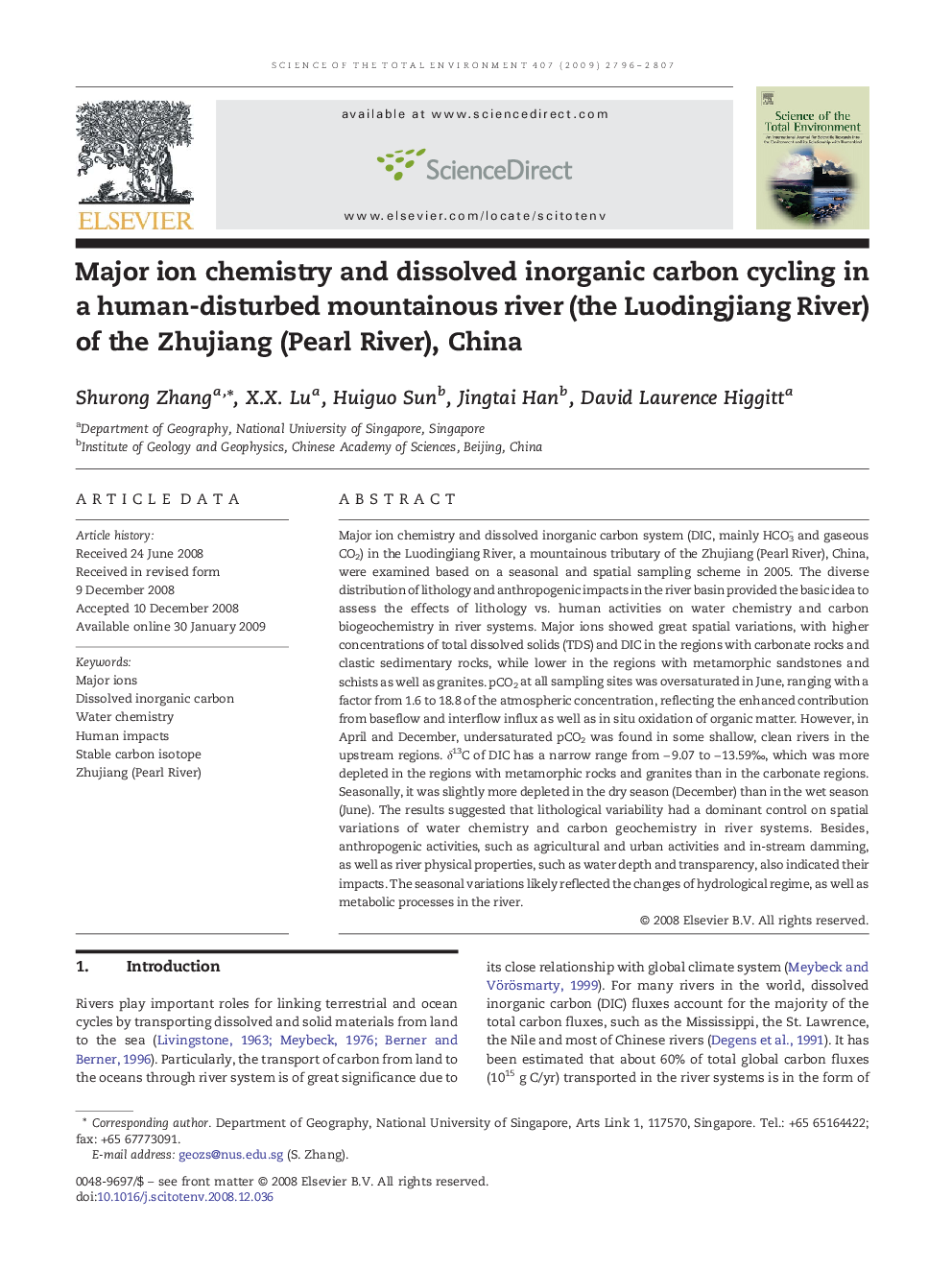| کد مقاله | کد نشریه | سال انتشار | مقاله انگلیسی | نسخه تمام متن |
|---|---|---|---|---|
| 4431967 | 1619902 | 2009 | 12 صفحه PDF | دانلود رایگان |

Major ion chemistry and dissolved inorganic carbon system (DIC, mainly HCO3− and gaseous CO2) in the Luodingjiang River, a mountainous tributary of the Zhujiang (Pearl River), China, were examined based on a seasonal and spatial sampling scheme in 2005. The diverse distribution of lithology and anthropogenic impacts in the river basin provided the basic idea to assess the effects of lithology vs. human activities on water chemistry and carbon biogeochemistry in river systems. Major ions showed great spatial variations, with higher concentrations of total dissolved solids (TDS) and DIC in the regions with carbonate rocks and clastic sedimentary rocks, while lower in the regions with metamorphic sandstones and schists as well as granites. pCO2 at all sampling sites was oversaturated in June, ranging with a factor from 1.6 to 18.8 of the atmospheric concentration, reflecting the enhanced contribution from baseflow and interflow influx as well as in situ oxidation of organic matter. However, in April and December, undersaturated pCO2 was found in some shallow, clean rivers in the upstream regions. δ13C of DIC has a narrow range from − 9.07 to − 13.59‰, which was more depleted in the regions with metamorphic rocks and granites than in the carbonate regions. Seasonally, it was slightly more depleted in the dry season (December) than in the wet season (June). The results suggested that lithological variability had a dominant control on spatial variations of water chemistry and carbon geochemistry in river systems. Besides, anthropogenic activities, such as agricultural and urban activities and in-stream damming, as well as river physical properties, such as water depth and transparency, also indicated their impacts. The seasonal variations likely reflected the changes of hydrological regime, as well as metabolic processes in the river.
Journal: Science of The Total Environment - Volume 407, Issue 8, 1 April 2009, Pages 2796–2807